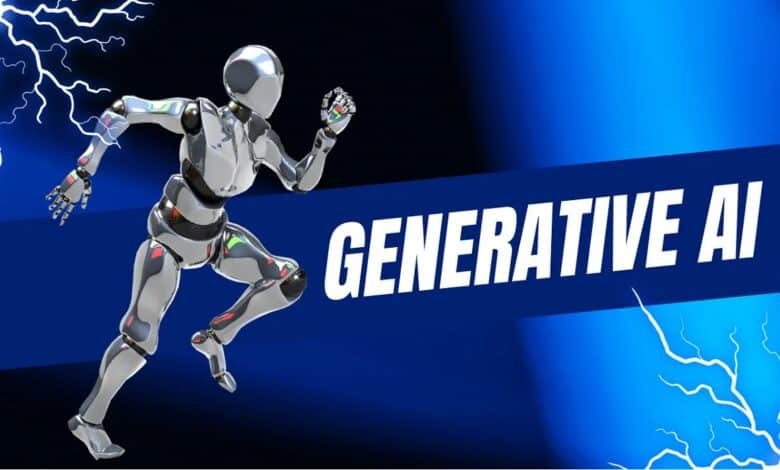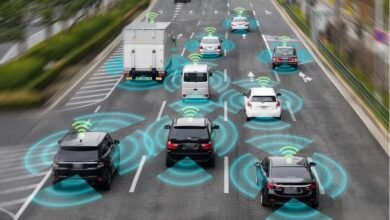
Generative AI is a rapidly evolving field of artificial intelligence that has captured significant attention across industries. As businesses, researchers, and hobbyists alike explore its potential, it’s crucial to understand the main goal of generative AI and its broader implications. This article delves into the core objectives of generative AI, explores its various applications, and discusses the challenges and future directions of this transformative technology.
Understanding Generative AI
Defining Generative AI
Generative AI refers to a subset of artificial intelligence focused on creating new content rather than merely analyzing or interpreting existing data. Unlike discriminative models, which classify and predict based on input data, generative models generate new data samples that mimic the properties of the original dataset. These models can produce diverse outputs, including text, images, music, and even complex simulations.
Key Technologies Behind Generative AI
At the heart of generative AI are several key technologies, including:
- Generative Adversarial Networks (GANs): Consist of two neural networks, a generator and a discriminator, that work in opposition to create new data.
- Variational Autoencoders (VAEs): Use probabilistic models to encode and decode data, enabling the generation of new, similar samples.
- Transformers: Such as GPT (Generative Pre-trained Transformer), which use attention mechanisms to generate coherent and contextually relevant text.
These technologies allow generative AI to create outputs that are increasingly sophisticated and human-like.
The Main Goal of Generative AI
Creating Realistic and Useful Content
The primary goal of generative AI is to produce content that is both realistic and useful. This involves:
- Realism: Generative AI aims to create outputs that closely resemble real-world data, making them indistinguishable from human-generated content.
- Utility: The content generated should serve practical purposes, such as enhancing creativity, automating tasks, or providing valuable insights.
In essence, generative AI seeks to blur the lines between artificial and human-created content, making it useful in a variety of contexts.
Enhancing Creativity and Innovation
Generative AI has the potential to greatly enhance human creativity and innovation. By generating novel ideas, designs, or solutions, it can serve as a powerful tool for artists, designers, and researchers. For instance:
- Art and Design: AI-generated art and design can inspire new aesthetic directions and creative processes.
- Scientific Research: AI can suggest innovative experimental designs or novel research hypotheses.
This enhancement of creativity can lead to breakthroughs and advancements that might not be possible through traditional methods alone.
Applications of Generative AI
Content Creation
Generative AI has revolutionized content creation across various media:
- Text Generation: Tools like GPT-4 can generate articles, stories, and even code, aiding writers and content creators in producing high-quality material quickly.
- Image and Video Creation: GANs can create realistic images or videos, which are used in marketing, entertainment, and virtual reality.
These applications streamline content production and provide new creative possibilities.
Personalization and Customization
Generative AI excels in creating personalized experiences:
- Marketing and Advertising: AI can generate tailored ads and product recommendations based on user preferences and behavior.
- Product Design: In industries like fashion or consumer goods, generative AI can create customized designs based on individual tastes and trends.
By offering highly personalized content, businesses can enhance customer satisfaction and engagement.
Simulation and Modeling
Generative AI is also valuable in simulation and modeling:
- Virtual Environments: AI can create realistic virtual environments for training simulations, gaming, or architectural design.
- Data Augmentation: In fields like healthcare, AI-generated data can supplement real datasets to improve model training and predictive accuracy.
These applications allow for more accurate and versatile simulations, benefiting various domains from education to healthcare.
Challenges Facing Generative AI
Ethical Concerns
Generative AI raises several ethical issues:
- Deepfakes and Misinformation: The ability to create convincing fake content can be misused for disinformation or malicious purposes.
- Copyright and Plagiarism: The use of AI-generated content may lead to debates over intellectual property rights and originality.
Addressing these ethical concerns is crucial to ensuring that generative AI is used responsibly and transparently.
Technical Limitations
Despite its advancements, generative AI faces technical challenges:
- Quality Control: Ensuring that generated content meets high standards of quality and relevance can be challenging.
- Bias and Fairness: AI models can perpetuate biases present in training data, leading to unfair or discriminatory outcomes.
Continuous research and development are needed to address these limitations and improve the reliability of generative AI systems.
The Future of Generative AI
Advancements in Technology
The future of generative AI promises several advancements:
- Improved Algorithms: Ongoing research will likely lead to more sophisticated algorithms that generate higher-quality content with greater accuracy.
- Integration with Other Technologies: Combining generative AI with technologies like augmented reality (AR) and virtual reality (VR) could create immersive and interactive experiences.
These advancements will expand the capabilities of generative AI and its applications across various fields.
Societal Impacts
Generative AI is expected to have significant societal impacts:
- Job Displacement and Creation: While AI may automate certain tasks, it also has the potential to create new job opportunities in areas like AI ethics, development, and oversight.
- Education and Accessibility: AI can democratize access to information and educational resources, making learning more accessible and personalized.
These impacts will shape the way we interact with technology and its role in society.
Conclusion
Generative AI is a transformative technology with the main goal of creating realistic and useful content across diverse applications. By enhancing creativity, personalization, and simulation, it holds the potential to revolutionize various industries. However, addressing ethical concerns and technical limitations is essential to harnessing its benefits responsibly. As generative AI continues to evolve, its future will be marked by advancements in technology and significant societal impacts, shaping how we create, interact with, and benefit from artificial intelligence.




